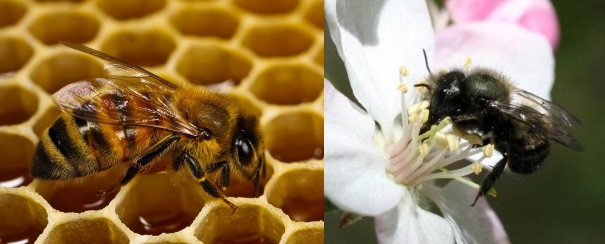Native Bees are my Teammates
Why should we care about pollination?
Are you thinking “What’s in it for me?”
Well it’s EVERYTHING!!!

According to the National Academy of Sciences, over 80 percent of the flowering plants on the earth rely on pollinators in order to set seed or fruit. From these plants come one third of our food and an even greater proportion of the food for our wildlife, from tiny songbirds to grizzly bears.
Next time you are sitting down for a meal look at your plate to see if you should be thanking a bee for your food.
What is Pollination?
Plants have male and female parts. When a pollen grain moves from the anther (male part) of a flower to the stigma (female part), pollination happens. This is the first step in a process that produces seeds, fruits, and the next generation of plants.
How Does the Pollen Move?
How does the pollen move from the anther to the stigma? Most of the pollination occurs when bees visit a flower to get pollen or nectar to feed themselves and their young. The pollen sticks to their bodies and when they visit other flowers the pollen is transferred to the stigmas of the other flowers. Wind, rain, bats, birds, and other insects can also transfer the pollen grains.
Want to Learn More?
Invite Joan Calder
for a Presentation at your next meeting or seminar
info@patiopublishing.com 805 729-5921